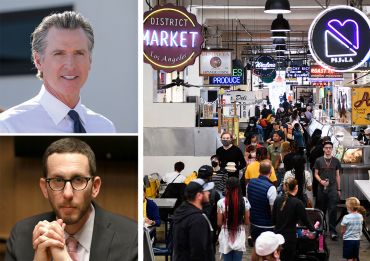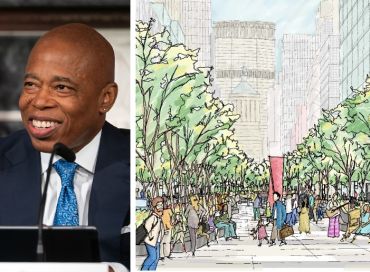Adams Zeros in on Waterfront Projects and Housing in 2024 State of the City
By Mark Hallum January 24, 2024 4:17 pm
reprints
Mayor Eric Adams plans to keep New York City’s waterfront relevant in the future by floating the idea for developments in key parts of the East River and New York Harbor.
During his third State of the City address on Wednesday, Adams said his Harbor of the Future initiative will see the creation of a $100 million “Climate Innovation Hub” at the Brooklyn Army Terminal and a research center dubbed the New York Climate Exchange on Governors Island. Adams also plans to make the sprawling Hunts Point Market in the Bronx run exclusively on renewable energy.
“We are transforming the waterfront and shorelines that first made New York the economic engine of this nation into the harbor of the future,” Adams said during the address. The Climate Innovation Hub at Brooklyn Army Terminal, he said, “will bring business development, incubation and research to a 4 million-square-foot campus, turning Sunset Park into a center for cleantech innovation and manufacturing.”
The Brooklyn Army Terminal hub alone could create up to 53,000 jobs, some of them temporary, and generate about $95 billion in economic growth, according to Adams.
Aside from waterfront development, the city’s housing agencies will be tasked with kicking off 24 projects on public sites throughout the year, an initiative that Adams called “24 in 24,” which will include an investment in the preservation of up to 12,000 units of housing in 2024. It’s not clear if that will be a mix of rent-stabilized or market-rate units or how much money the city will invest in the effort.
Adams also proposed the creation of a “tenant protection cabinet,” which would streamline government services for renters.
But New York State Comptroller Thomas DiNapoli had serious concerns about the city’s ability to invest in its future with budget shortfalls and the migrant crisis draining what is left in the city’s vault.
“Public safety, affordability, and economic growth must guide future investments for New York, but the city is facing serious challenges, including unsustainable spending on the migrant crisis, growing housing costs and federal pandemic aid coming to an end,” DiNapoli said in a statement. “The city needs federal funding and policy changes to help manage asylum-seeker costs. At the same time, the city must work with the state to bring rising housing costs under control.”
Jay Martin, executive director of the Community Housing Improvement Program (CHIP), supported the mayor’s City of Yes initiative for the benefits it will bring to rent-stabilized tenants and owners of those buildings through decreased property taxes as well as renovating units to put more apartments on the market.
“We also need to ensure that the focus on housing includes efforts to maintain and preserve existing rent-stabilized buildings, which have been severely defunded and devalued over the past several years,” Martin said in a statement. “The government must do more to lower the operating costs for rent-stabilized multifamily buildings and housing providers. If they do not, hundreds of thousands of New Yorkers will suffer as safe, affordable and quality housing options are eliminated.”
Mark Hallum can be reached at mhallum@commercialobserver.com.


